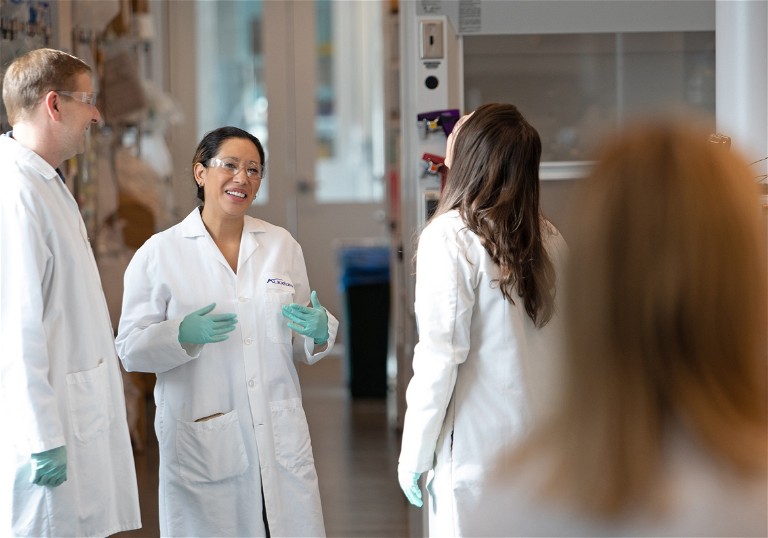RARE DISEASES
Transforming access: the power of patient-centricity in rare disease
Dana Vigier from Alexion considers the challenges facing rare disease treatment and the importance of patient-centricity to improve outcomes
There are 400 million people around the world affected by a rare disease, yet there are no approved treatment options for over 90% of the more than 10,000 rare diseases.1,2,3 While great progress has been made in recent years to research and develop treatments for these conditions, there is still an urgent unmet need experienced by much of the rare disease community. Ensuring patient-centricity in all aspects of work in rare diseases, from the research and development stages all the way through to commercialisation, could help us to better outcomes for people living with a rare disease.
Understanding the challenges with rare diseases
The challenges associated with developing treatments for rare diseases can be significantly more complex than with more common diseases, for several reasons. First, rare diseases are often not well understood, with few existing tools to detect and guide the development of effective therapies. Second, patient populations are very small and diagnosis is difficult because the same disease may present differently across patients. With 80% of rare diseases having a genetic basis, diagnostic tests are a key tool for diagnosis, yet these tests are not readily available in all countries.4 Additionally, many healthcare providers are not experienced in treating rare diseases.
Together, these factors contribute to a significant delay in diagnosis – an average of five years – which can be physically and mentally burdensome.5 Even after receiving a diagnosis, patients are met with limited options for access to treatment and can face hurdles navigating their condition, even with guidance from doctors, nurses and various patient support organisations. In other cases, the assessment of the disease impact on patients’ everyday life may not have been considered carefully enough.
The urgency to improve patient access to rare disease therapies
Today, science is progressing at a rapid pace, with life-changing rare disease therapies on the horizon. These therapies, many of which will be cell and gene therapies, can be complex to administer and manage and will be challenging to integrate into our traditional healthcare ecosystems. This current lack of infrastructure to support such innovative therapies is a significant barrier to patient access. Given the lack of available treatments for rare diseases, it can be especially frustrating when a condition has an approved treatment and no straightforward route to the patient.
We have science on our side – and we now must find ways to adapt our healthcare infrastructure to support the transition from hard-to-reach therapies to medicines that can potentially change patients’ lives. to creating a more equitable healthcare landscape for rare disease patients.

Embedding patient-centricity in our everyday work to improve outcomes
Engaging directly with rare disease patients, caregivers and patient advocacy organisations – and truly listening – can make a tremendous difference not only in their care, but in the research and development of treatments for their conditions, as well. For example, for many people, living with a rare disease impacts every aspect of their lives, including daily activities, restricting their social life, and preventing them from working full-time or at all.6 By understanding those challenges, we can take a patient-centric approach to the design, tailoring and execution of meaningful clinical trials that meet patients’ unique needs.
Patients play an essential role in clinical trials, and their role is amplified in the rare disease space; patient populations are small and dispersed, therefore creating unique barriers to recruiting and retaining patients for clinical trials. Unlike in other therapeutic areas, the departure of just one patient from a rare disease trial can have a significant impact on the conduct and outcome of the trial. Thus, it is important to tailor core elements of the clinical trial process to meet the unique needs of rare disease patients and reduce participation burdens.With an enhanced understanding of patient experiences, we can strengthen the delivery of healthcare for rare disease patients, developing tools to shorten time to diagnosis, uncover insights that contribute to the development of transformative medicines and ensure patient access.
Moving towards a patient-centric future
Making progress in rare disease requires careful consideration of the complex challenges that patients face in their day-to-day lives, but also those that the healthcare ecosystem faces in making treatments available. Working collaboratively with patients, healthcare providers, payers and industry partners to evolve the system is vital in the journey
As an industry, it is our responsibility to adopt innovative and collaborative efforts to overcome challenges and push the boundaries of science to deepen our understanding of rare diseases so that no patient is left behind. Working toward understanding patients as individuals, not just their diseases, will enable patients’ unique needs to be better served. Patient-centricity is paramount to ensuring this progress. The best treatment in the world is only effective if people can access it in the first place, and improving patient access in rare diseases requires our collective effort to positively impact the future.
References
1. Visit: doi.org/10.1038/s41431-019-0508-0
2. Visit: doi.org/10.1186/s13023-018-0936-x
3. Visit: doi.org/10.1038/d41573-019-00180-y
4. Visit: genome.gov/dna-day/15-ways/rare-genetic-diseases
5. Visit: eurordis.org/our-priorities/diagnosis/
6. Swiss Muscle Society (Schweizerische Muskelgesellschaft). Report: Understanding the daily burden of gMG

Dana Vigier serves as the vice president for the Central and Northern Europe Area (CENE) for Alexion, AstraZeneca Rare Disease. Trained as a Medic, Dana brings her clinical acumen to her business leadership and defines herself as being “business trilingual”: she has worked and led Medical Affairs, Market Access and Commercial teams, in local (France), European and Global positions. She has honed her expertise in generalist and specialty markets with GSK, and oncology with BMS and AstraZeneca.